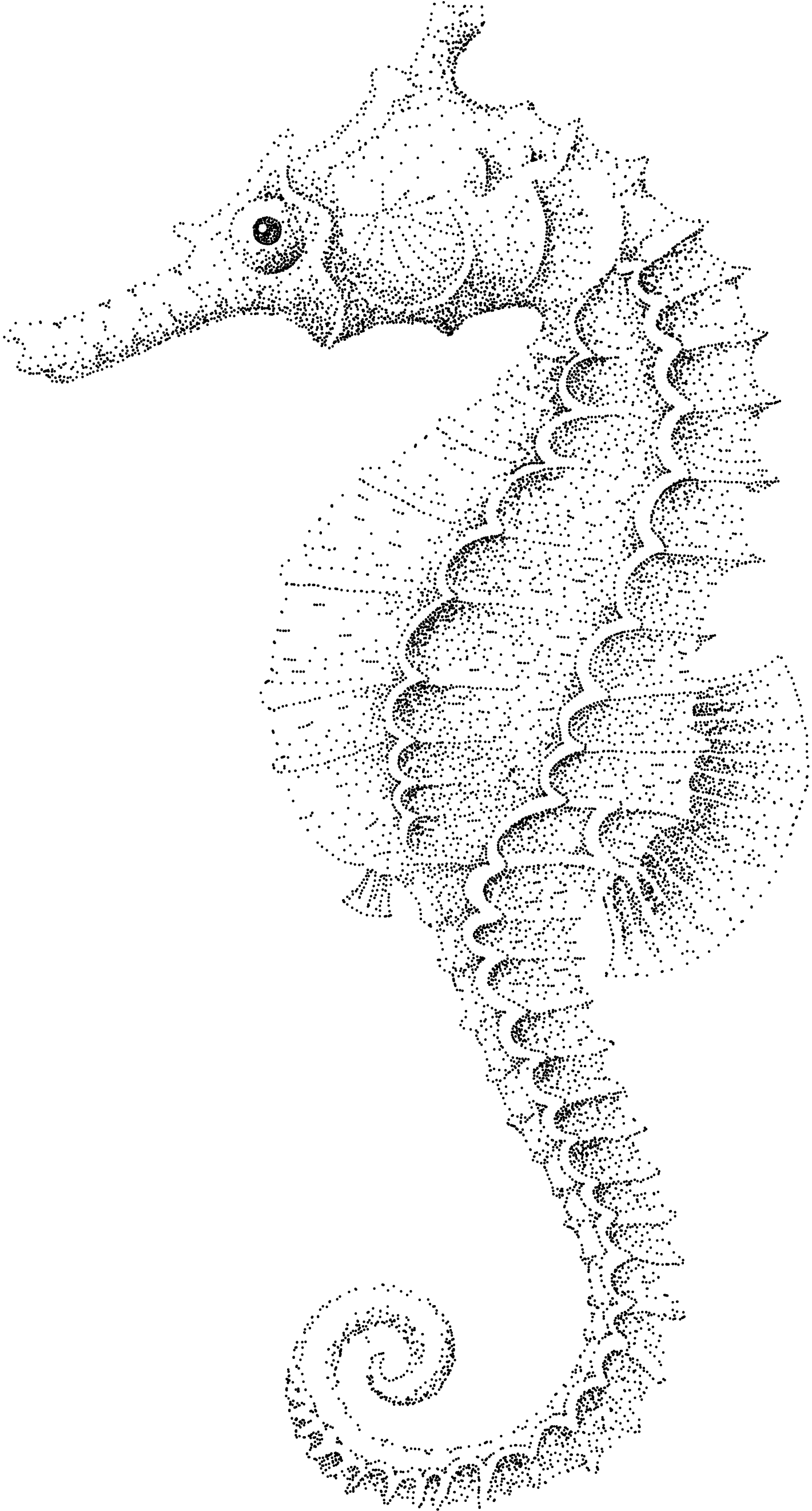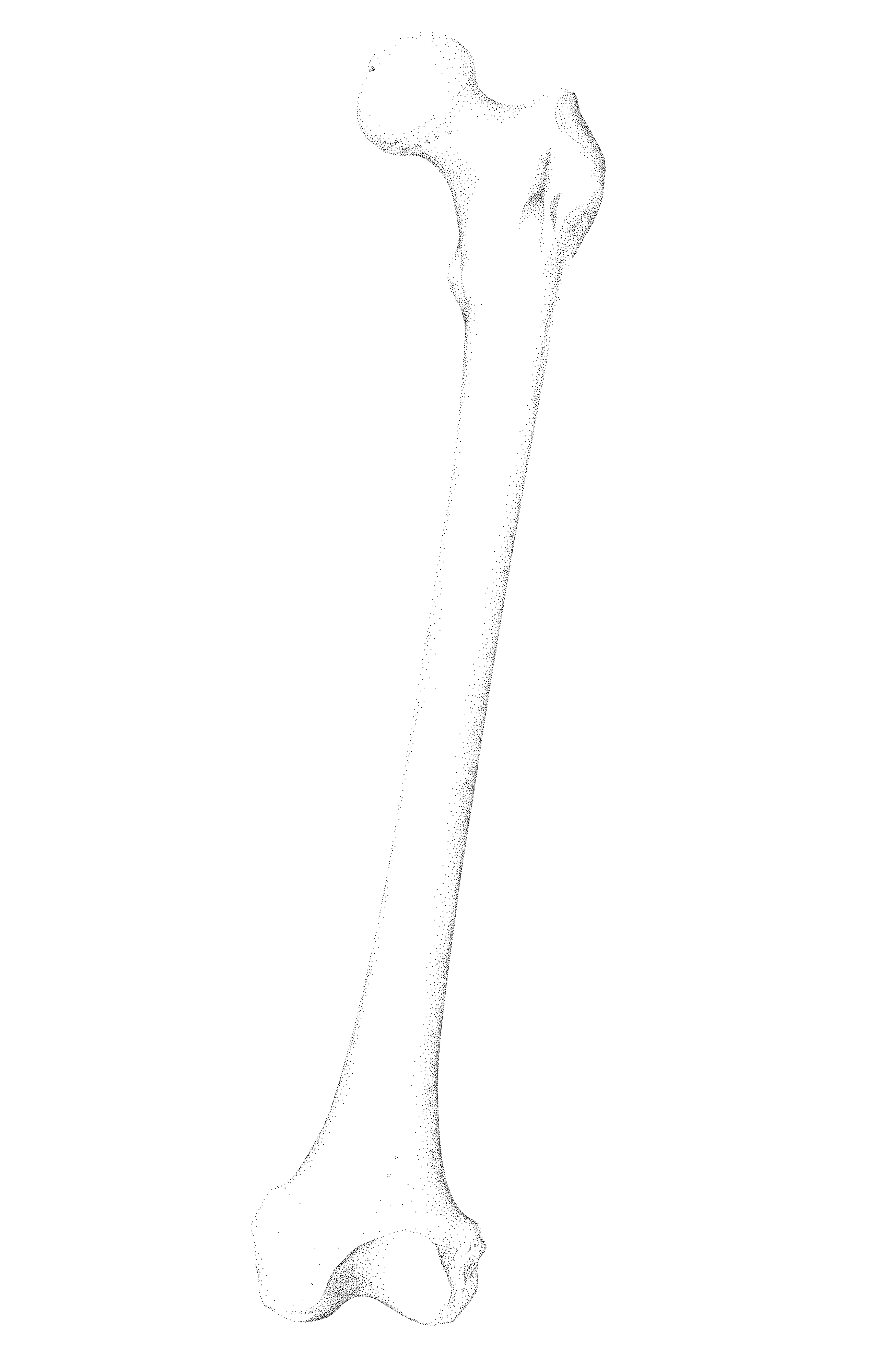Lost memory of Brno
An archive is everything but definitive. It is the nature of every living collection and such a collection is a city as well.
Every nation, every culture and every society strive to forget and sometimes even cut off its unwanted past. As a result, blind spots and distorted reality are created instead. In general, society learned to forget in order to keep a healthy “state of mind”. As a memory of an individual cannot afford to capture everything, collective memory has a similar feature. Émile Durkheim had already declared that every society displays and requires a sense of continuity with the past and thus establishes a collective memory, even though he had not mentioned this term explicitly. On the other hand, forgetting is not only a defensive and voluntary mechanism of the society but also an inevitable consequence of violent history. A civilization developed a series of tools to forget and remember afterwards. Museums, libraries, memorials, repositories and archives. According to Adrian Forty, in the Western tradition fragile human memories are preserved in a form of material objects and thus artefacts are made. Together artefacts constitute a collection that is part of the archive or does collection equal archive? What is the archive then?
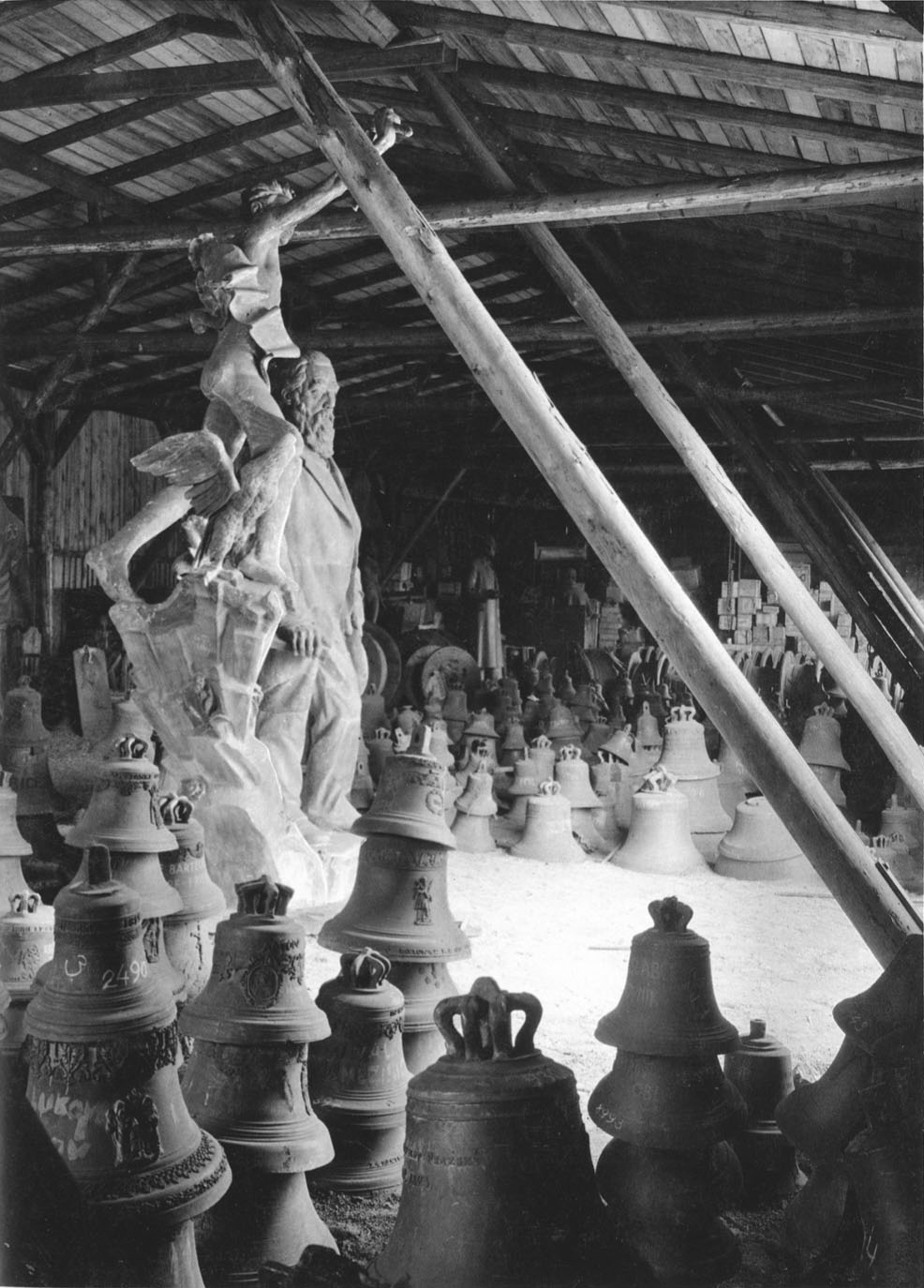
Graveyard of bells and sculptures
at the Maniny metals scrapyard, Prague, 1945, Josef Sudek
The origin of the word “archive” could be traced to the Greek “arche”, which means beginning, origin, order and government. Thus the close relation of archive to politics and power is obvious. It has been exceptionally researched in recent time. As for instance in well-known Archive Fever by Jacques Derrida: “There is no political power without control of the archive, if not of memory.” Traditionally, buildings that housed archives have had a physical similarity to places of worship. A wearing of white gloves indicated the almost sacred nature of the material. Especially in the archive you realize the vulnerability of the material. There is this essence of preserving something with a hidden potential for the future. In a contemporary context, an archive is a service or institution that collects, classifies, conserves, and makes accessible certain documents. The last characteristic is important in order to differentiate the archive from the vault or other secured containers. Archive not only protects but reveals as well. Archive needs to be located on a safe place secured from unwanted elements, although it does not necessarily mean a distant location on a periphery behind barbed wire as it is common for data centres and other restricted typologies.
In contrast to the artefact making stands iconoclasm as the most conventional way of forgetting. This denial of the past has unintended consequences and empty pedestal is even more memorable than the previous monument. After all, absence becomes the stronger element similar to gaps in the city waiting to be filled as an empty shelf. In the words of Alison and Peter Smithson, we should not be frightened of holes in cities and focus on their qualities instead.

never filled gap sites from WWII on the street Cejl,
(original photographs were taken shortly after the war, from Brno City Archive)
(original photographs were taken shortly after the war, from Brno City Archive)
Departing from a very broad understanding of memory repositories and precarious techniques using to store recent human memories, I landed in a very specific place with specific conditions. In the former centre of the textile industry of Brno in the Czech Republic. Since then I became an archivist, in order to reveal instead of reinvent. In order to grasp this complex environment, I set up three boxes made from acid-free paper that contained real artefacts such as historical postcards, piece of brick wall or unique dictionary and reniterpreted artefacts such as maps, booklets or a video.

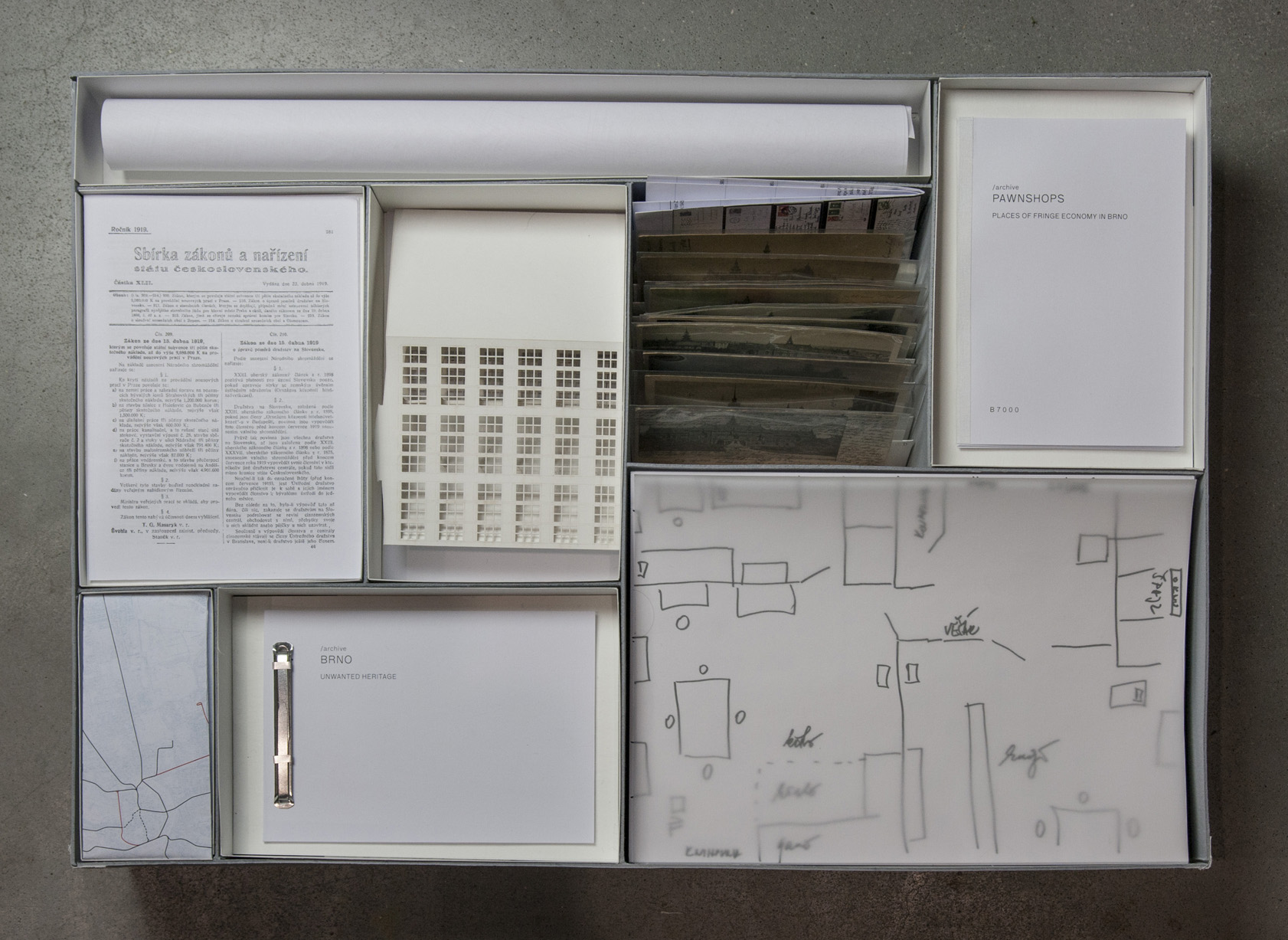
BRNO


LABOUR


ROMA
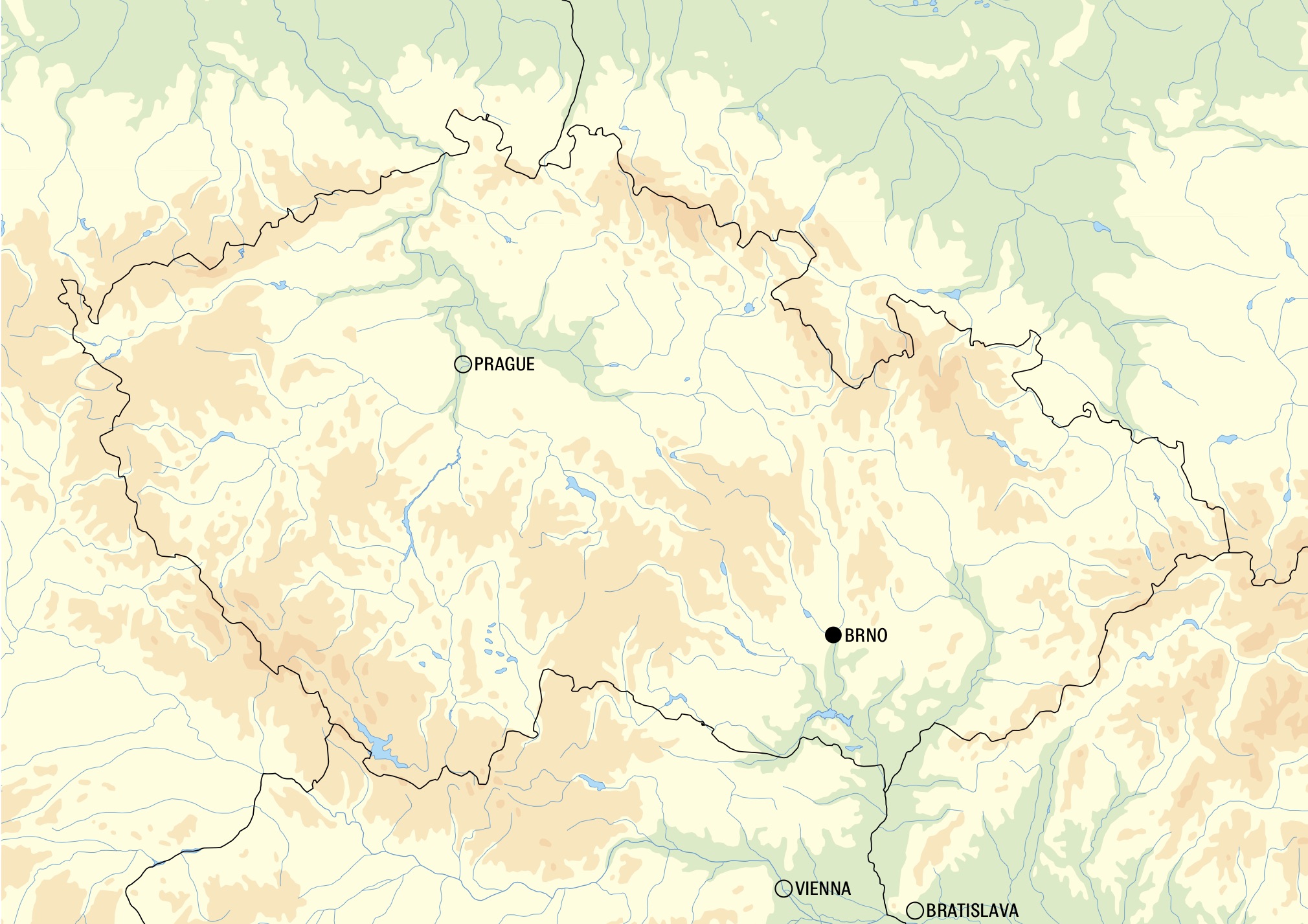
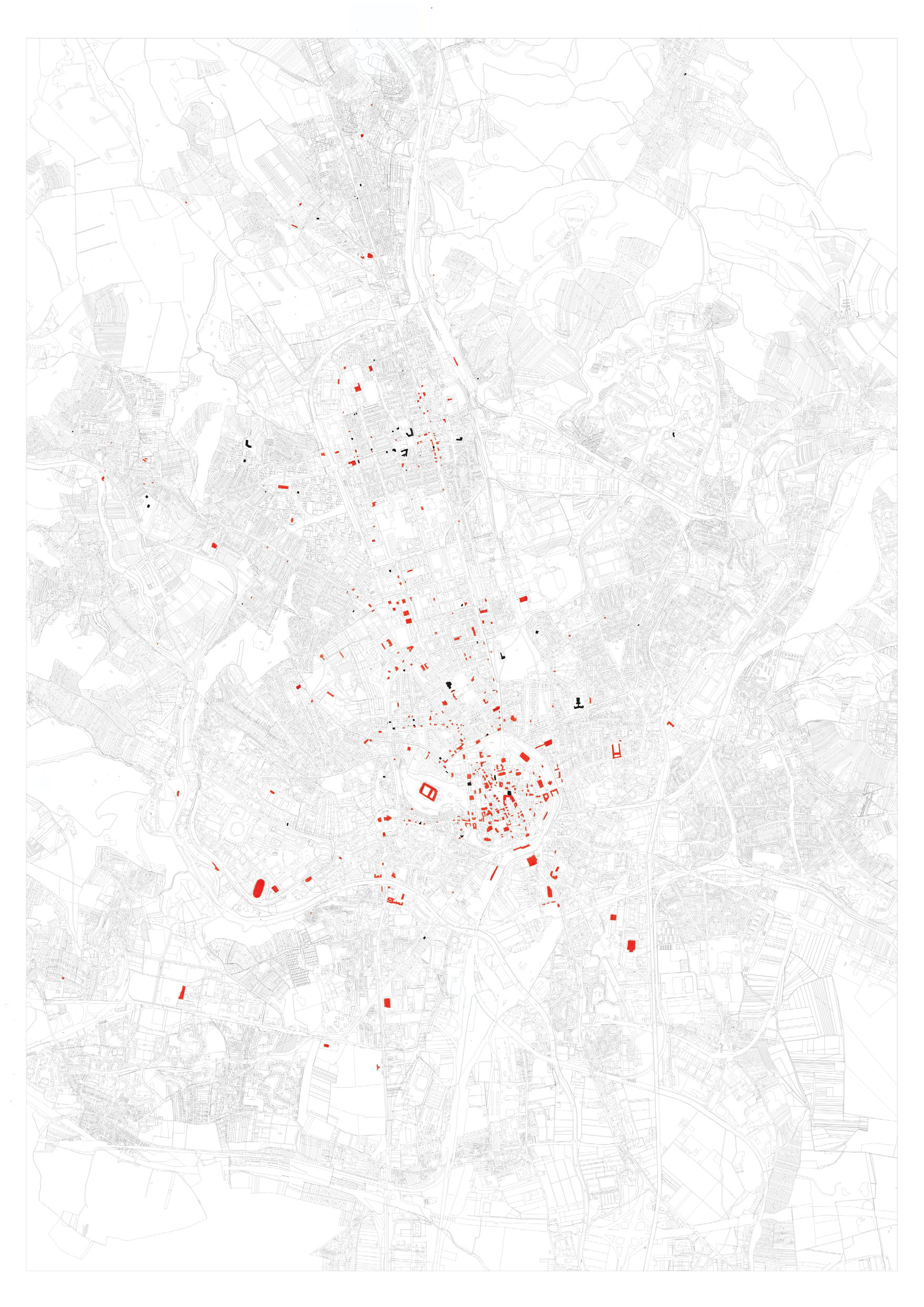
my “memory schwarzplan” of Brno

schwarzplan of Brno with focal point of the project


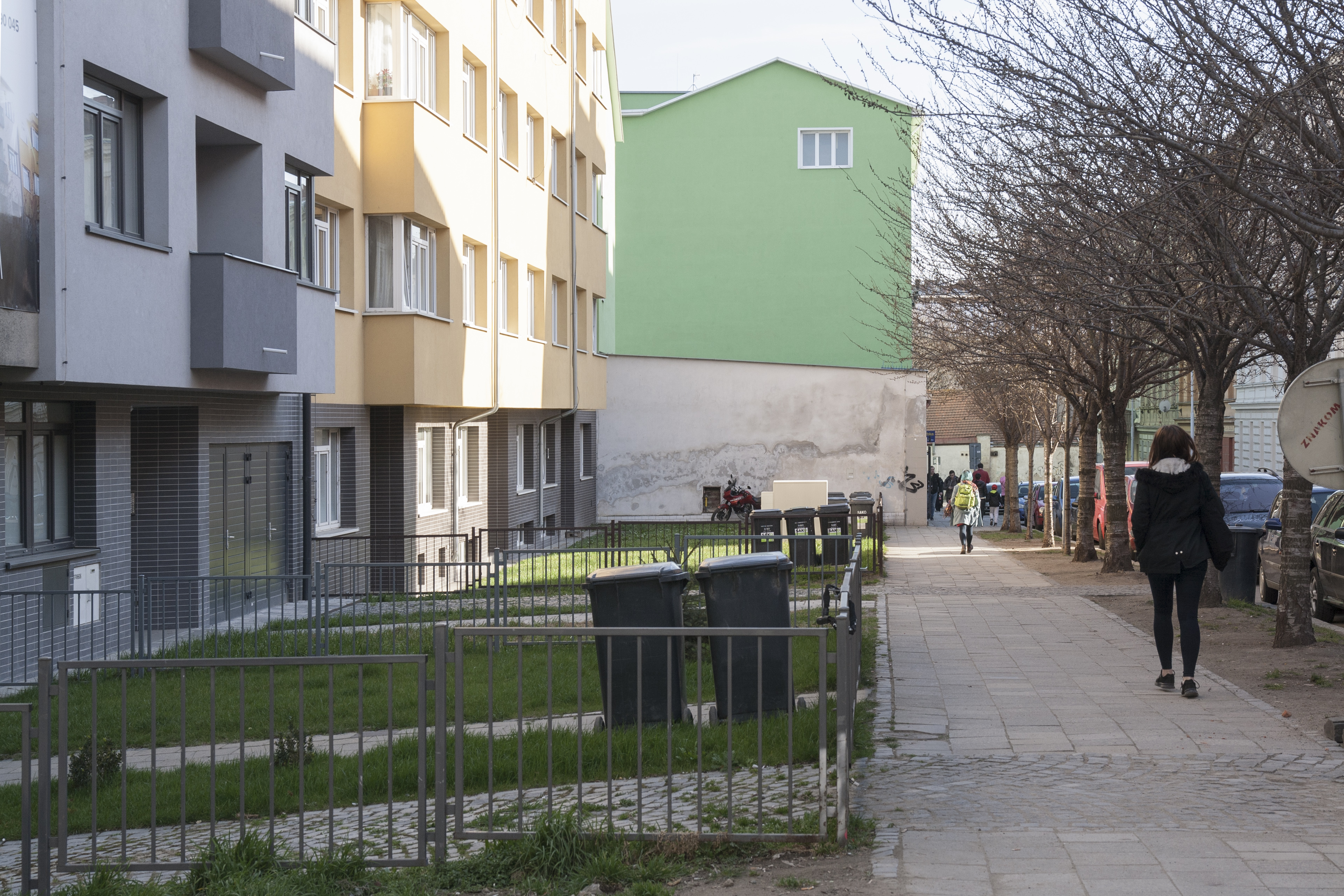


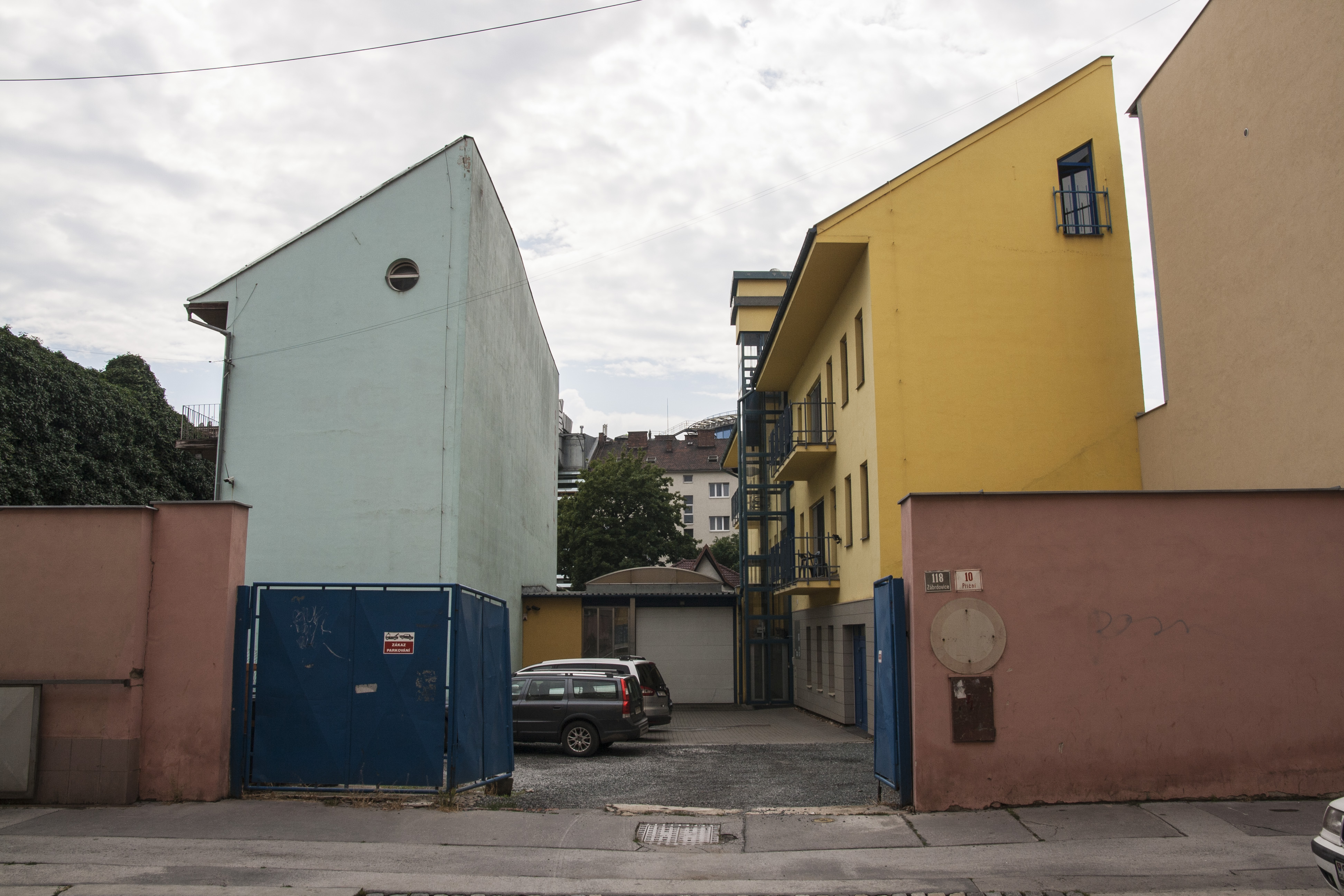
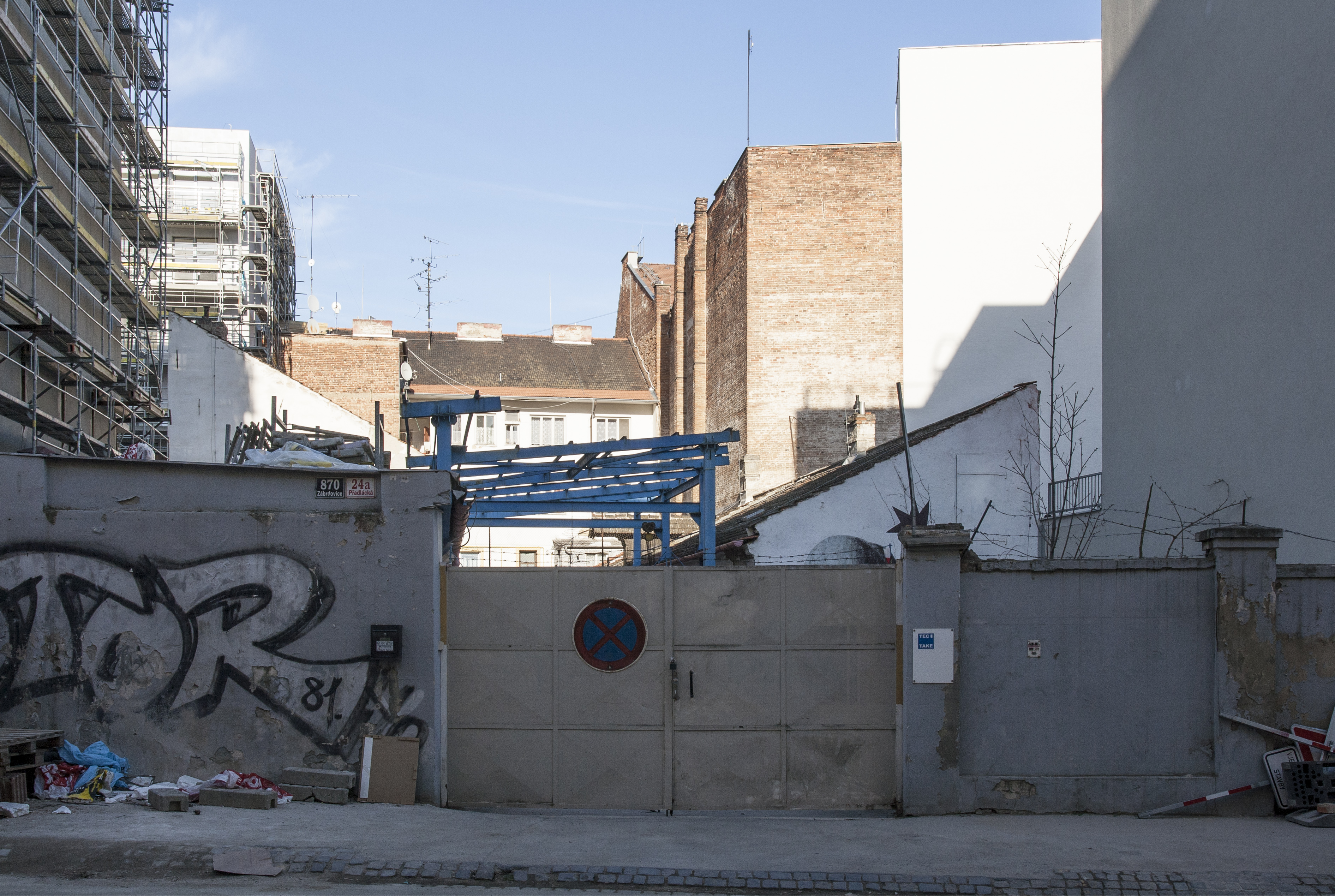
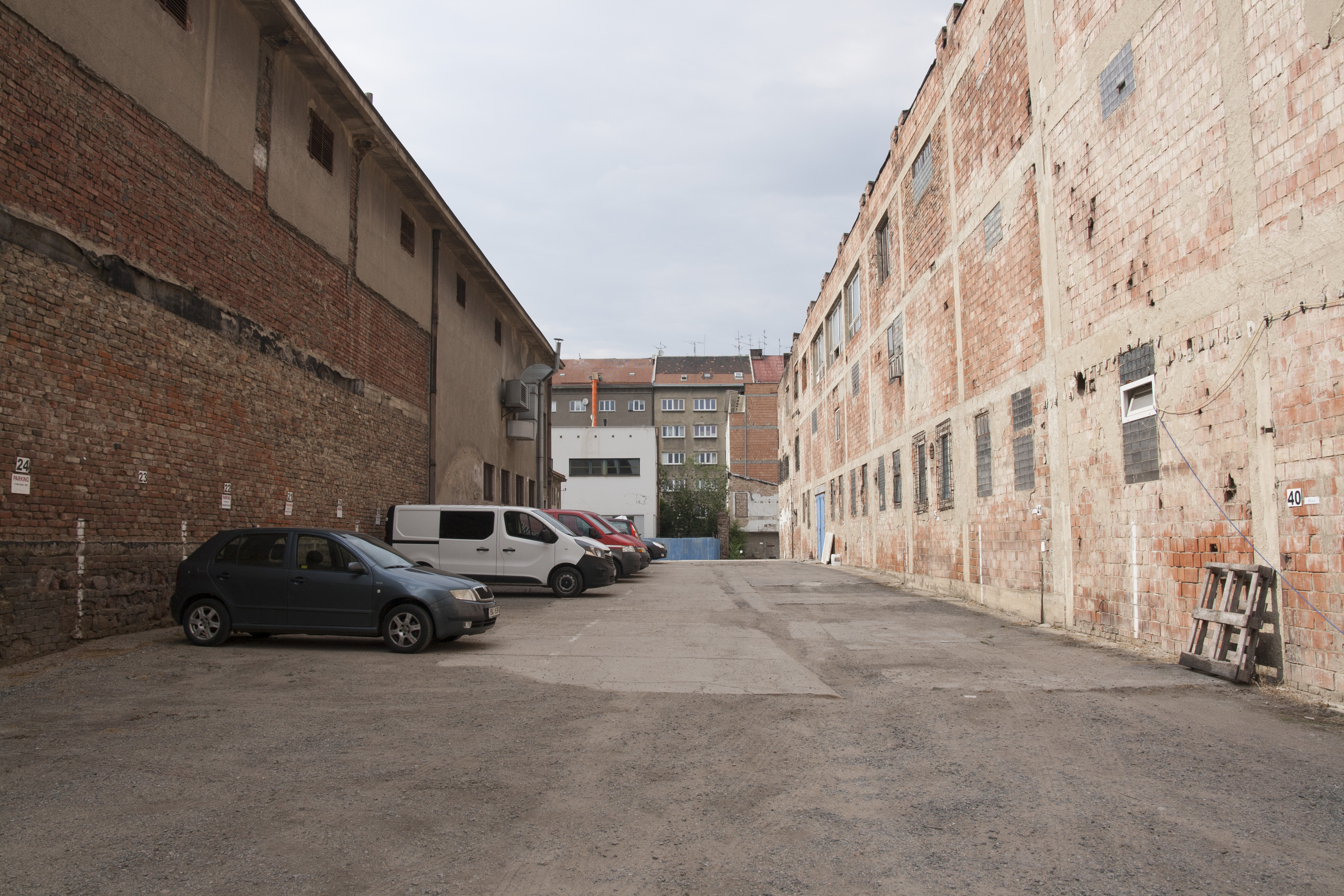
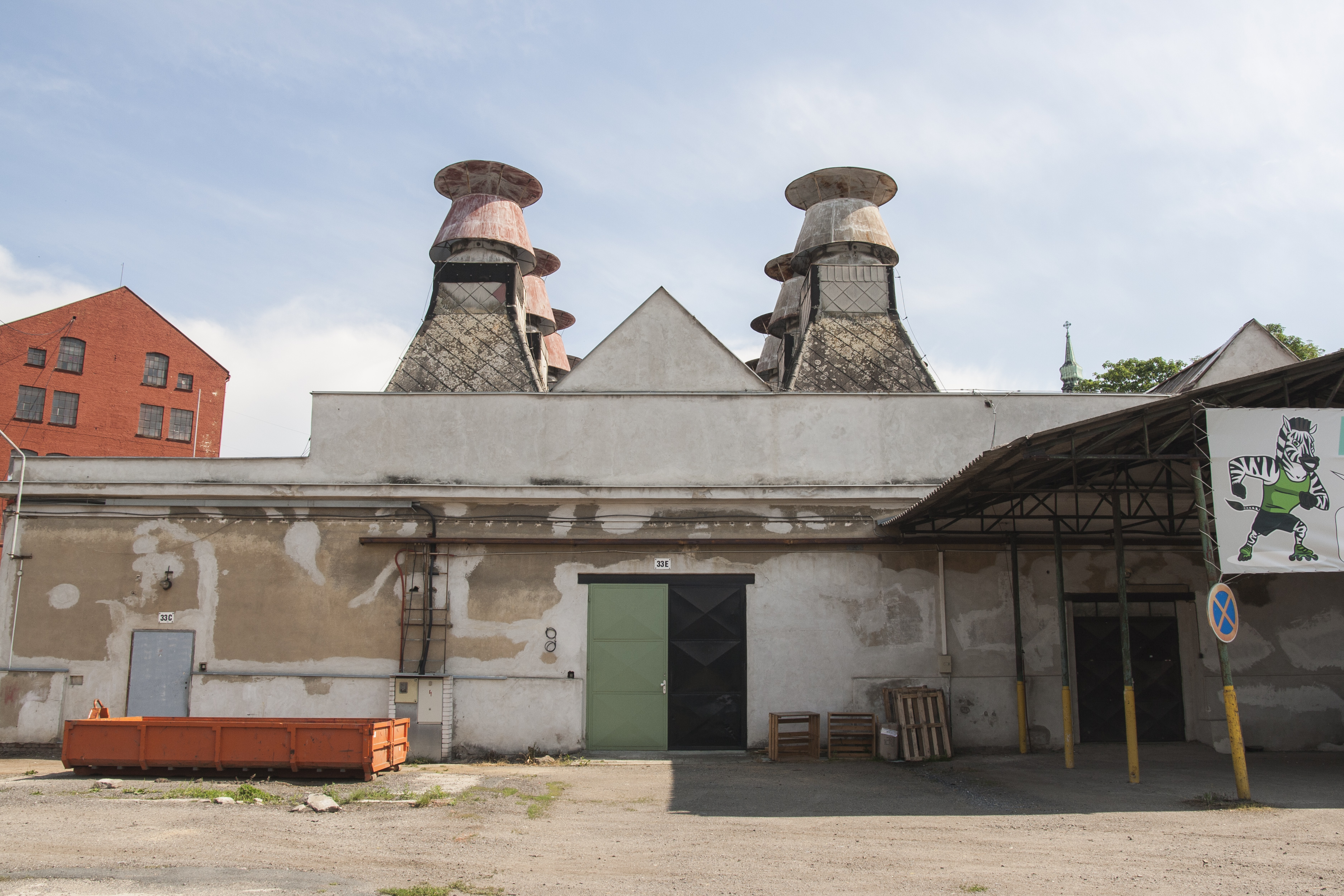

Four heterogenous places represent the past and future as well. Each of them is situated in a different life cycle. As any other artefact in the archive, they could be easily overlooked, hidden or lost. The aim was not to be excessively nostalgic, but to demonstrate that renewal or reappropriation could serve as an effective strategy for resistance to commercialization and express a form of critique. When generating these new meanings my role shifted to the realm of an architect. I was trying to approach my proposal rather as a piece of infrastructure that I am inserting in existing conditions. Infrastructure that could serve as a tool to study the environment. What I found especially useful was instead of thinking of the final image of the proposal, was to think about the list of necessary steps. These steps were described in action plans I proposed for every place. Finally, a possible future was represented in a series of collages reusing the original historical or contemporary photographs.

GAP SITE
BAKERY
WORKERS’ HOUSE
TEXTILE FACTORY
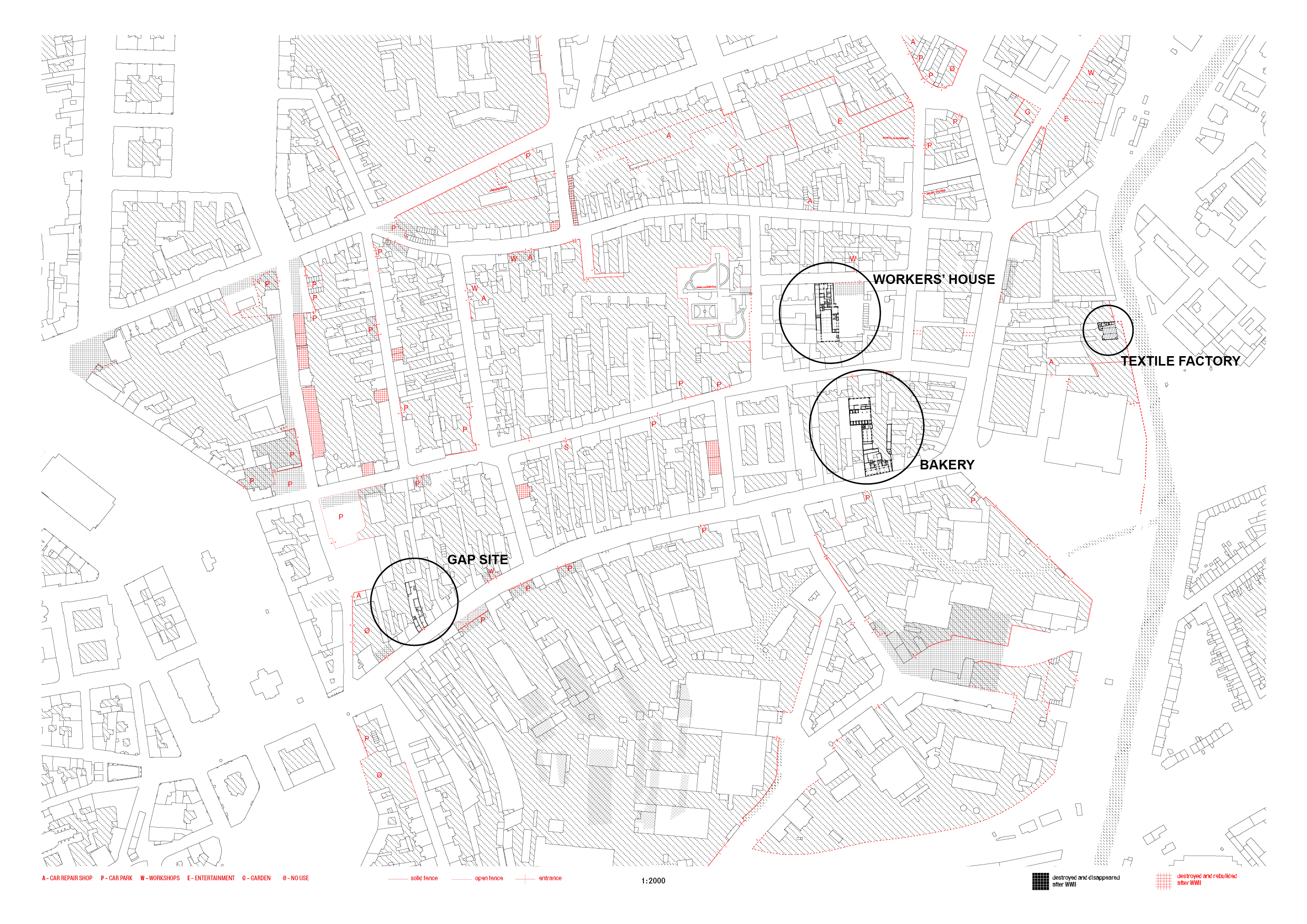
Gap site
A common assignment that tends to be addressed by filling. I propose a temporary structure instead that reveals a quality of such irregularity. As a result, the gap will not be filled completely and permanently. It aims to invite people from outside of this area and to serve as an entrance point to this whole area, where visitors will learn about the past. Almost a theatrical act that reveals an inner life of the block, since the site is stretched long to the block’s entrails.

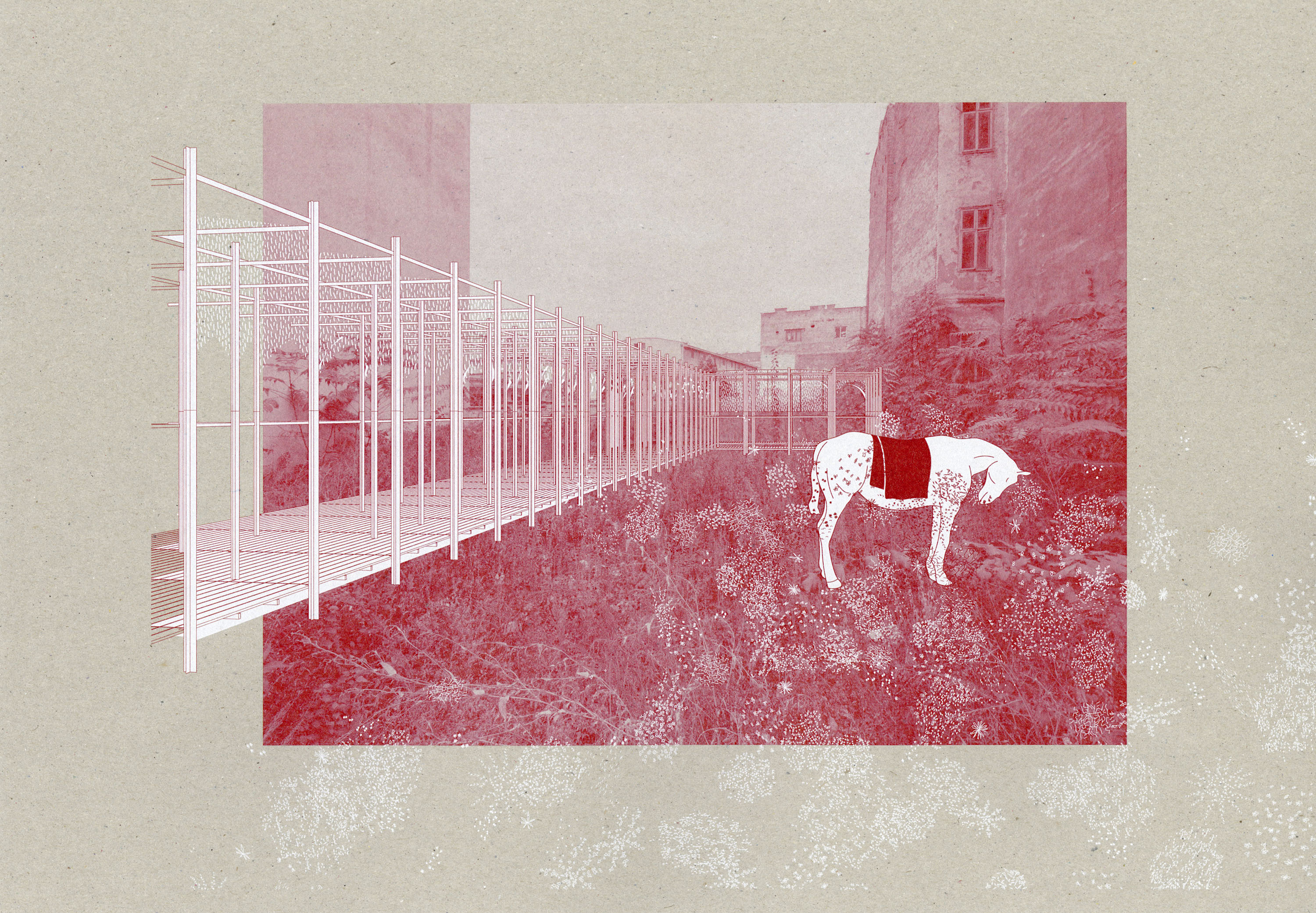





Bakery
Until last year it used to be a working bakery serving the whole city and further beyond its borders. However, now its future fate is unclear. I start the discussion about the future by opening the gates of the complex and making it an important link in an otherwise unpermeable block. The front object is a former city palace with a neglected passage that lost its glory long ago. First, two floors are still devoted to retail and the rest is occupied by housing. The former passage terminated originally under the city palace. Nevertheless, I am continuing with the idea of a passage in the former bakery premises by making openings or ramps. Since the buildings are in very good condition, no big securing measures are needed. After the analysis of local phenomena - pawnbroker's shops, I am proposing a municipal pawnshop into this generous spaces.

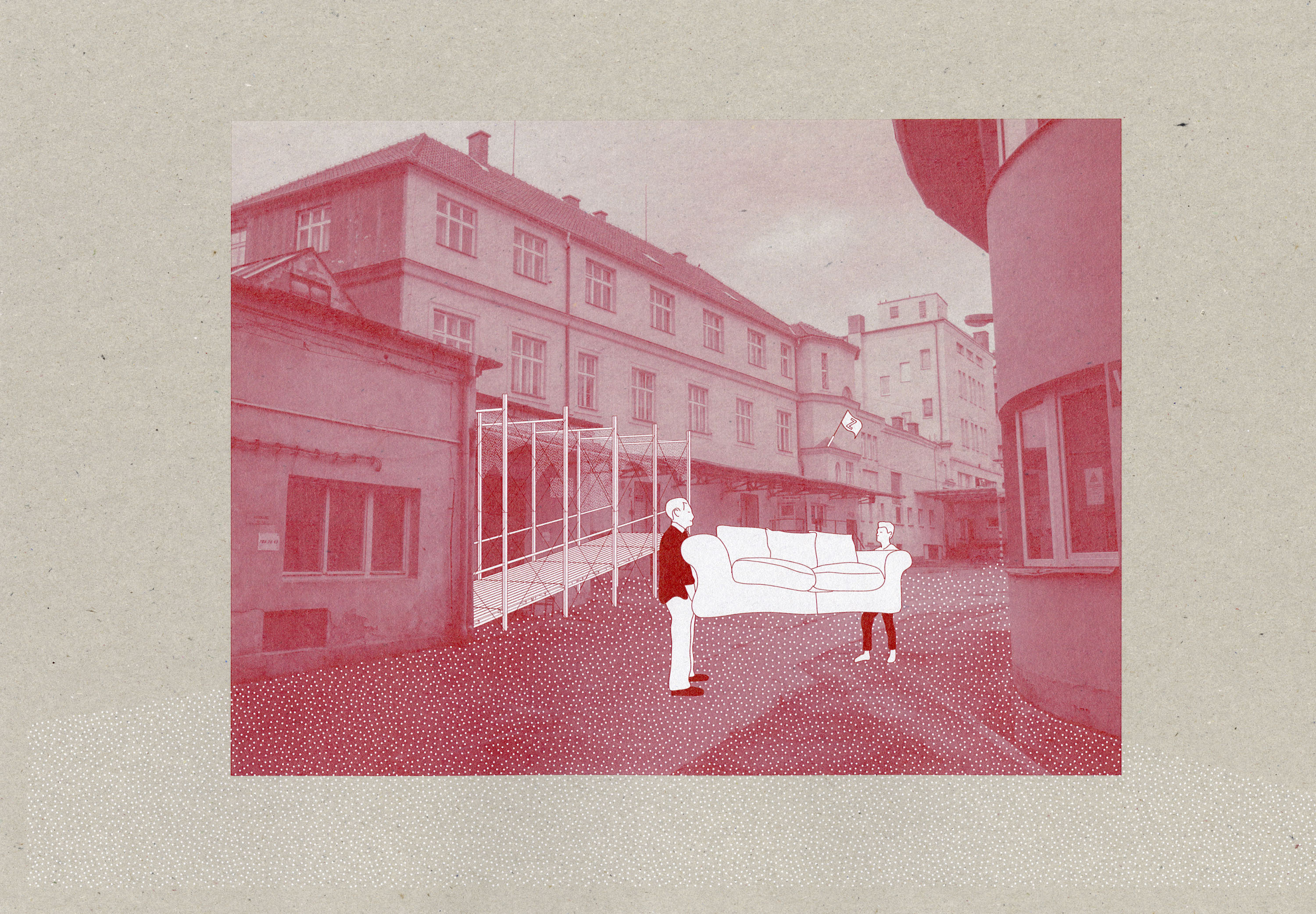

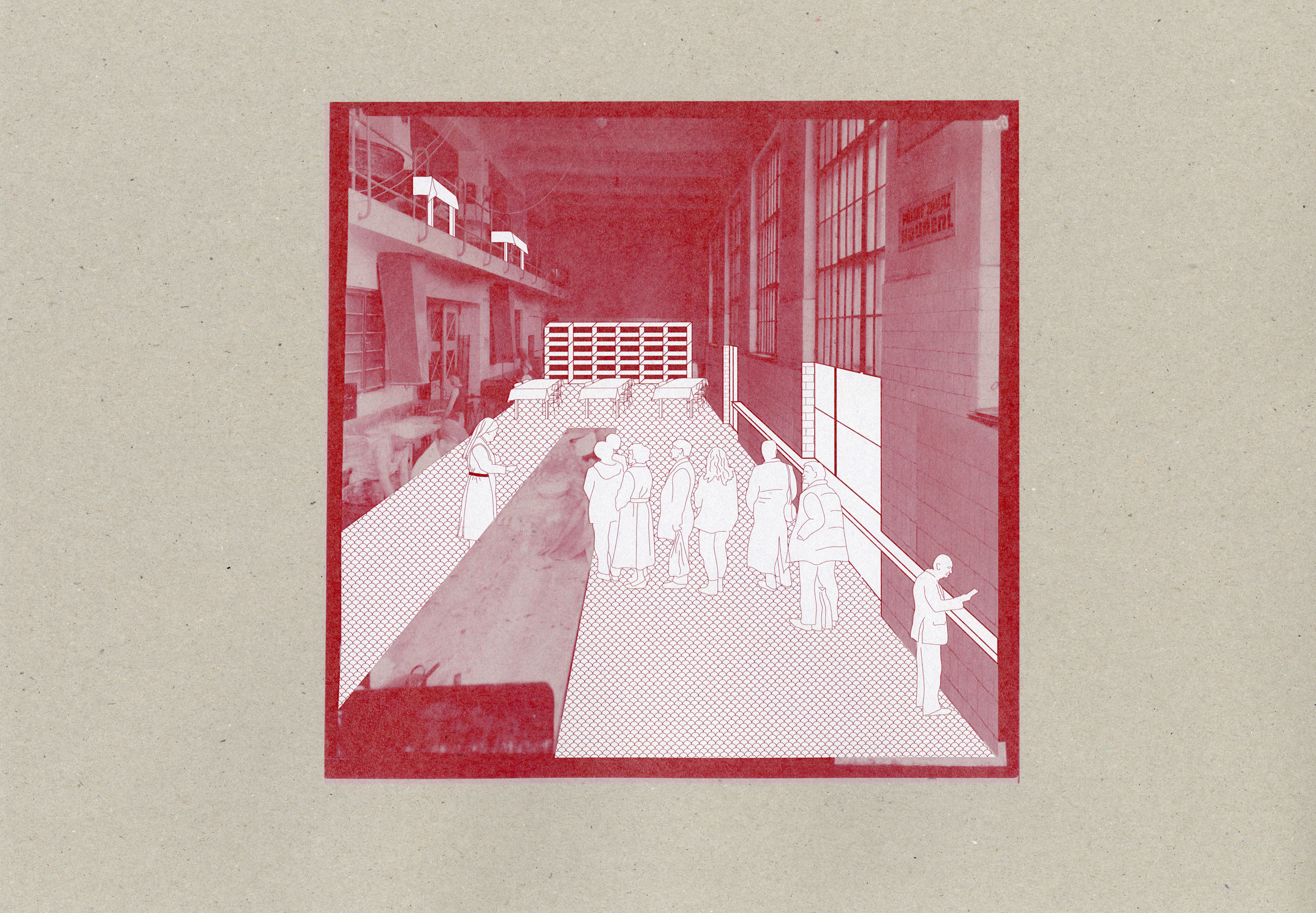

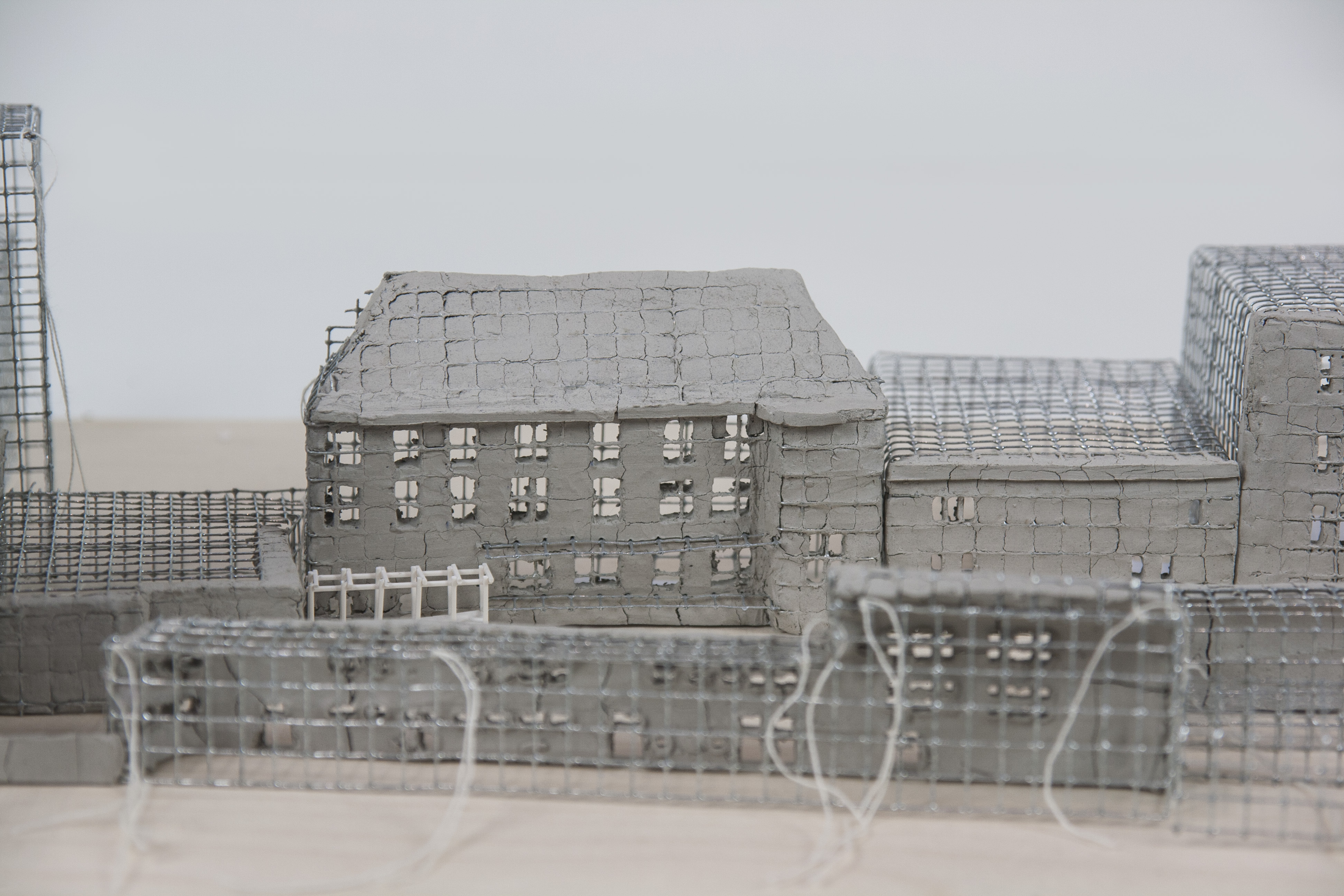
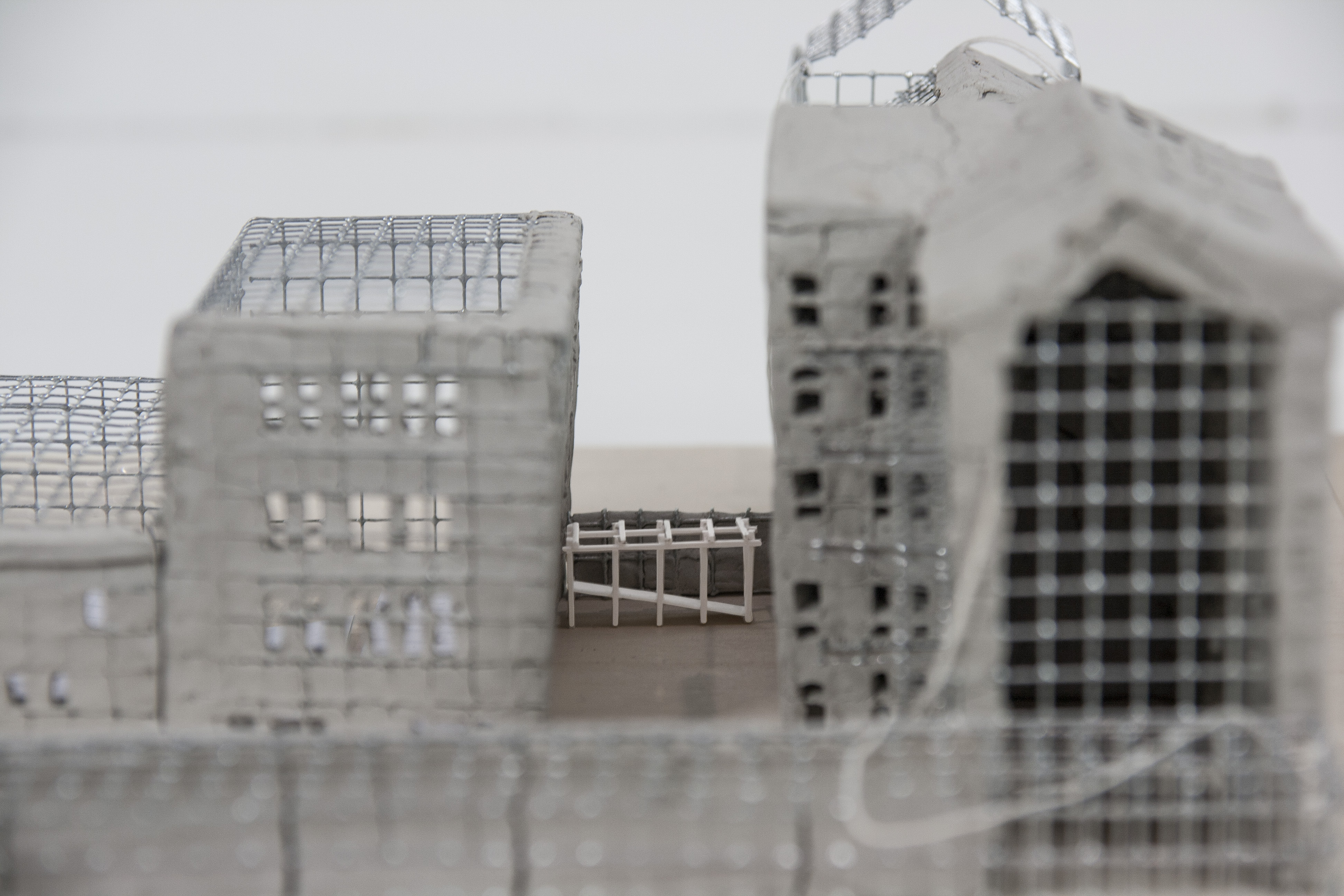


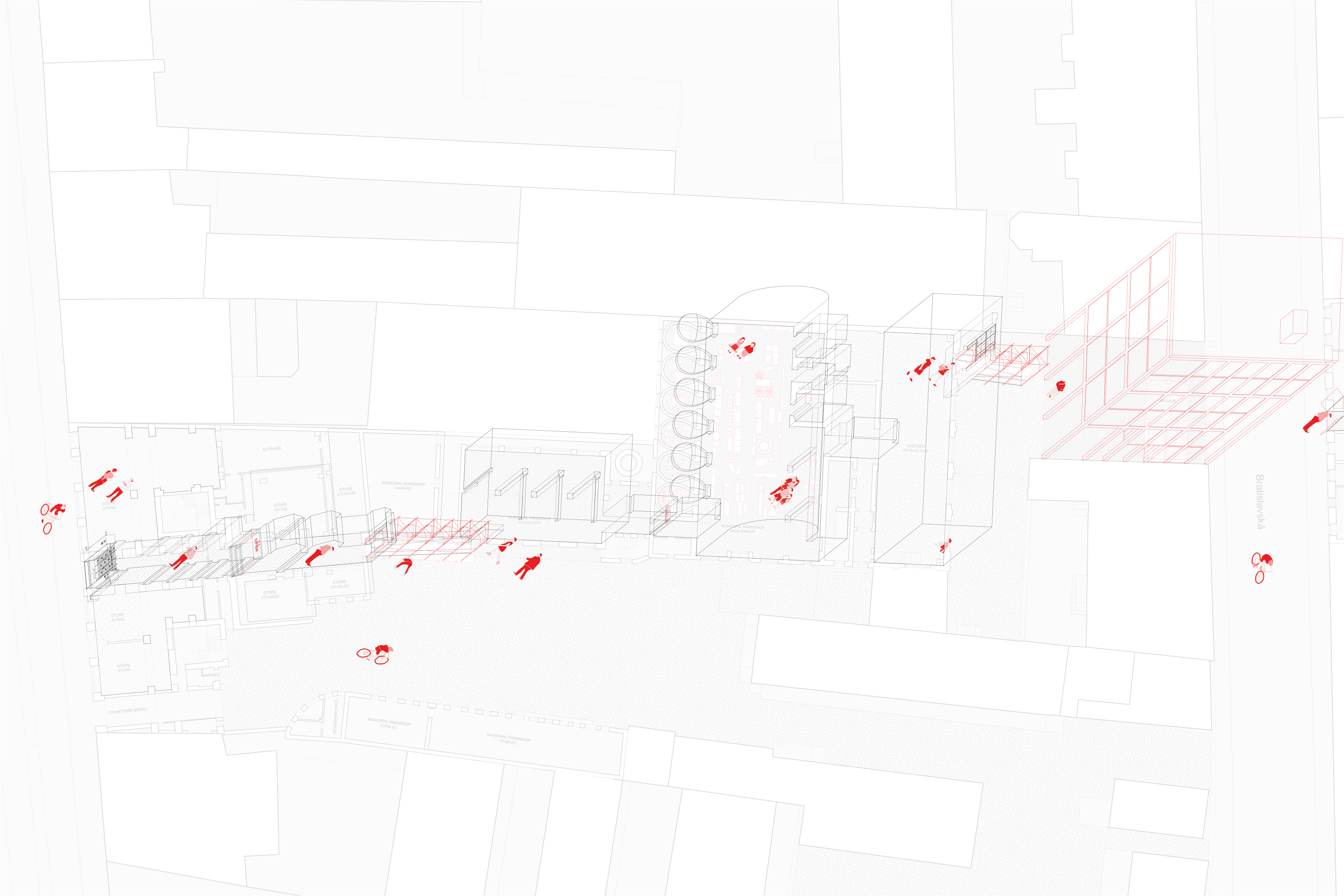
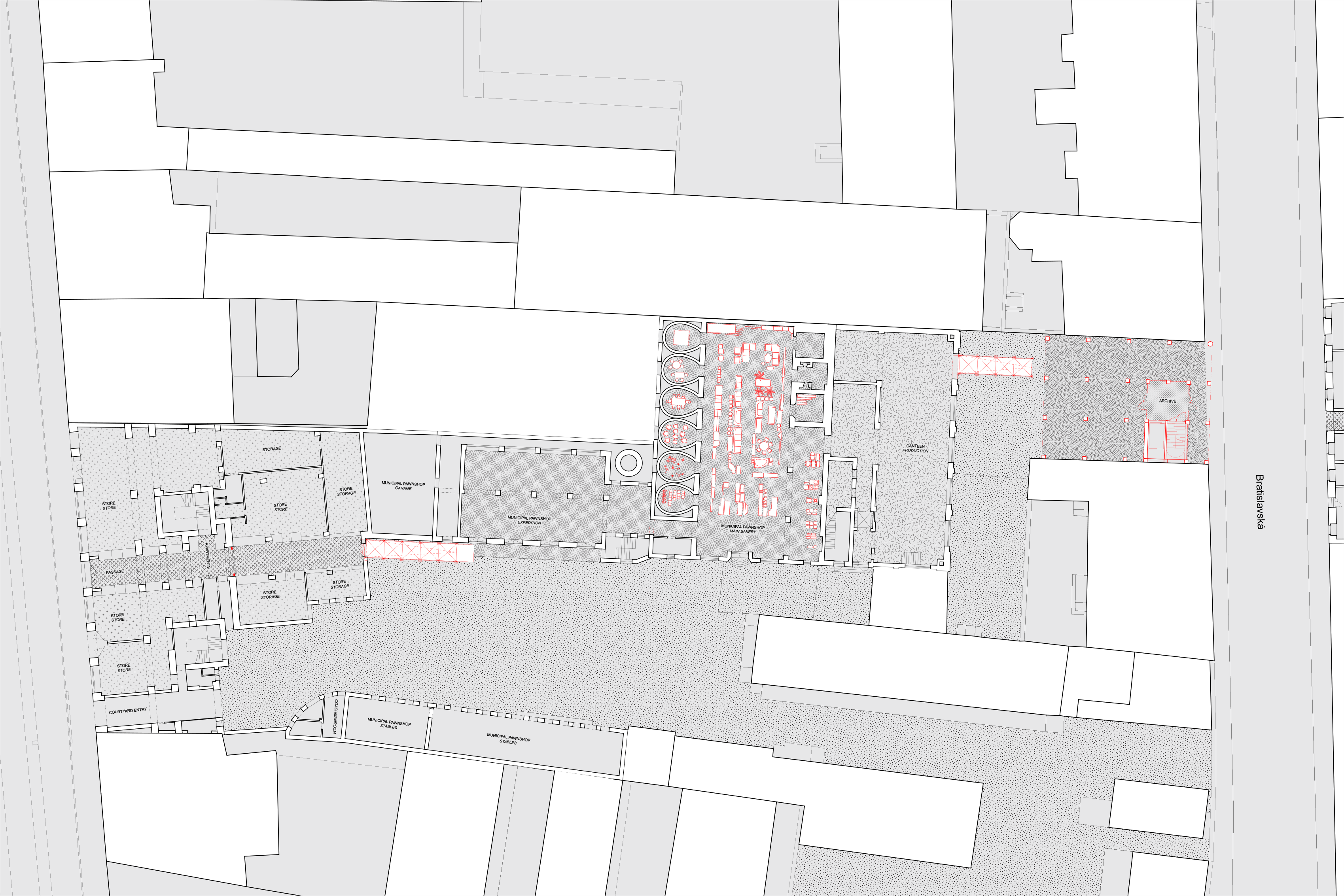
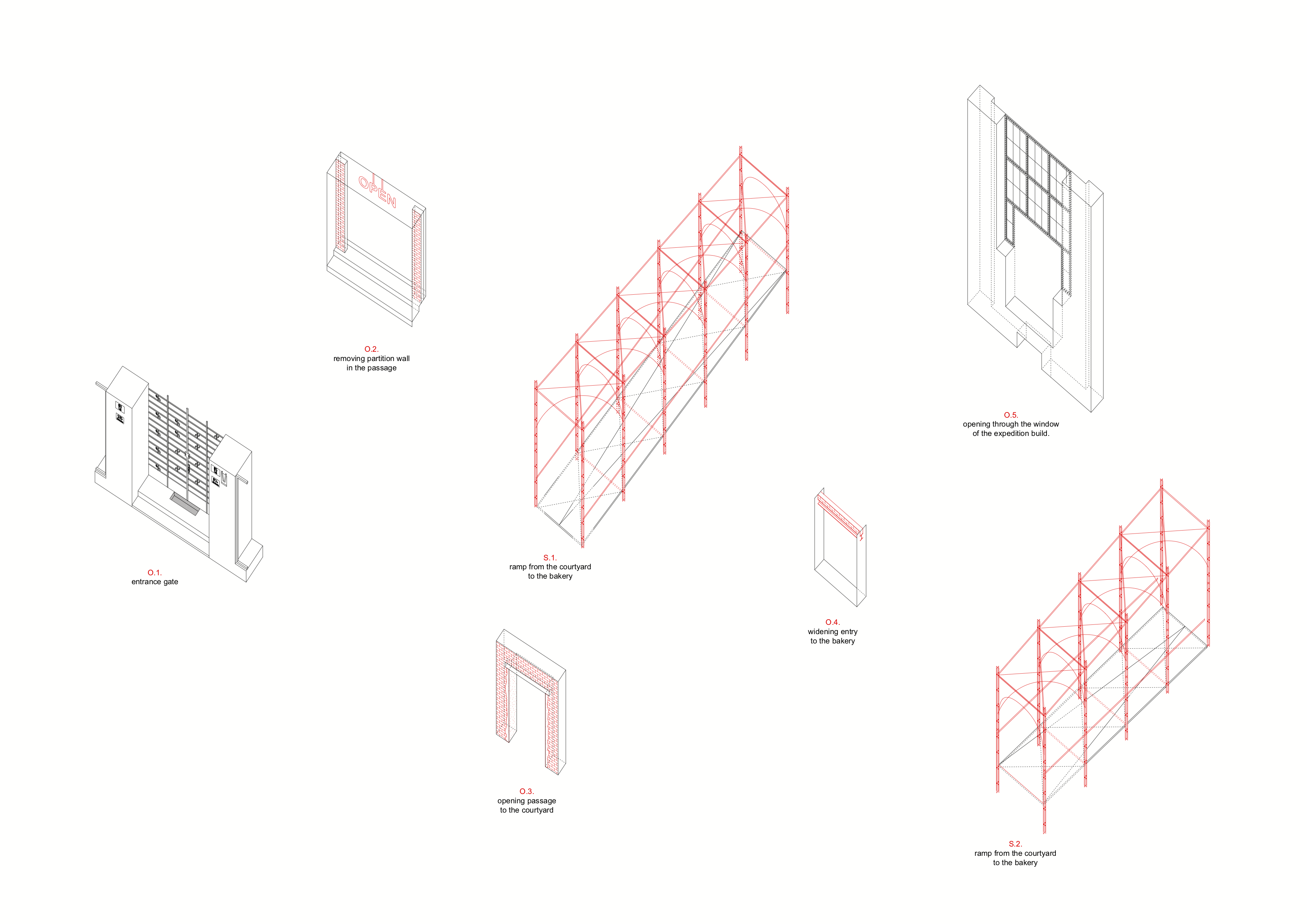
Workers’ house
Once an edifice flourishing with culture and social life was replaced by openness and vegetation today. A pressing reminder of time. Workers' house was a unique mixed-use typology composed of gym, cinema and community hall. I develop this typological division into three big rooms with specific environments. Firstly, room for a gym is transformed into an ambiguous space of open interior park, where a wedding can take place or children can foster their imagination. Cinema is refurbished in order to become an auditorium where culture could be absorbed. Lastly, the community hall offers a spacious room for the city filled with light prepared for displays and gatherings.




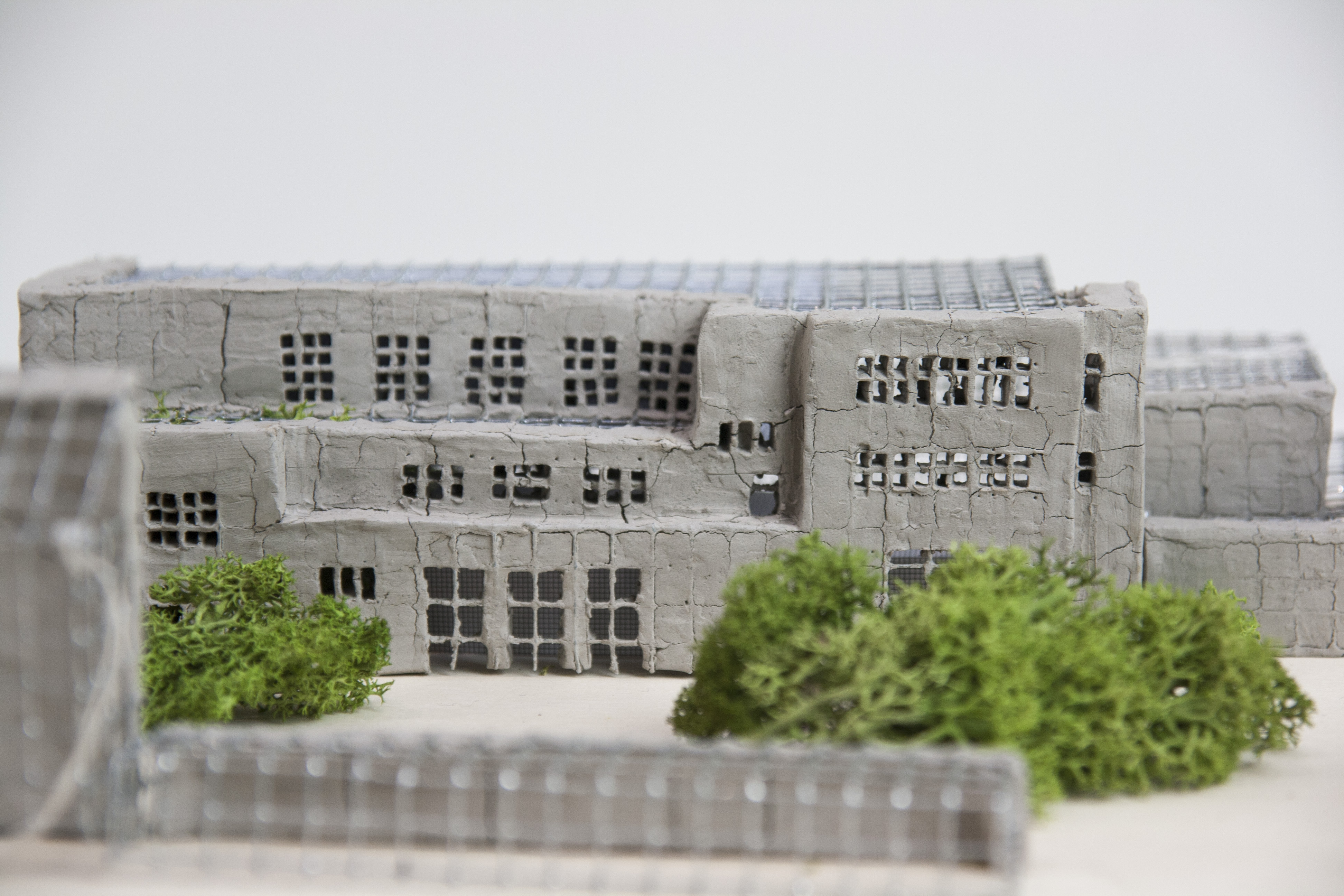



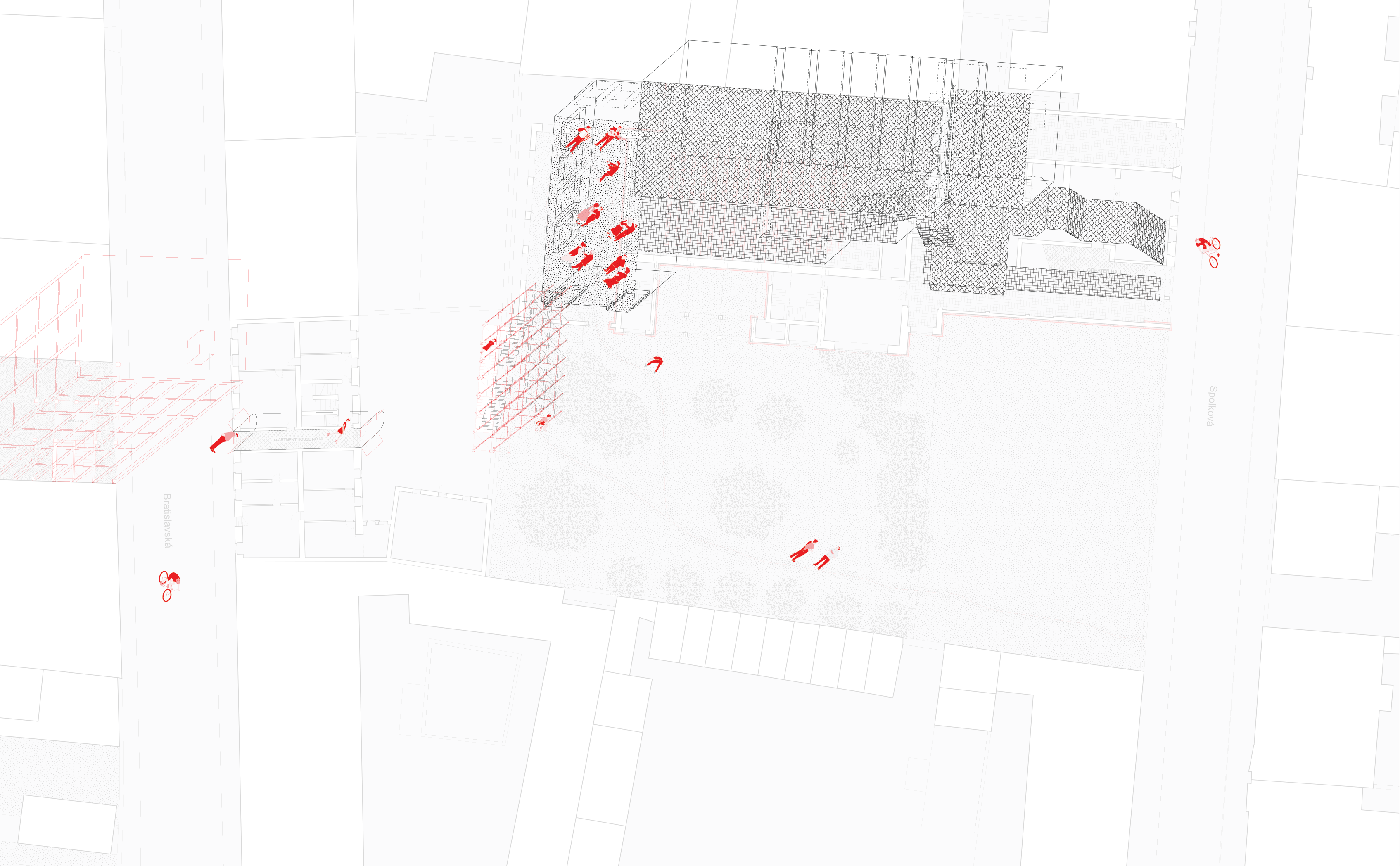

Textile factory
Rigid structure of the former textile factory is now disguised with redundant layers. By removing them, it returns to the previous state and addresses also a local marginalized group of people. Roma people constitute the main identity of the area, which is slowly disappearing with rising gentrification. Therefore, a reclaimed factory will serve for the purposes of music education. Music that is essential for Roma culture. Moreover, the institution of school can bring more permanent qualities to this area and establish new traditions. The public attitude of the music school is utilized to open also the riverbank of Svitava river - now completely underused.




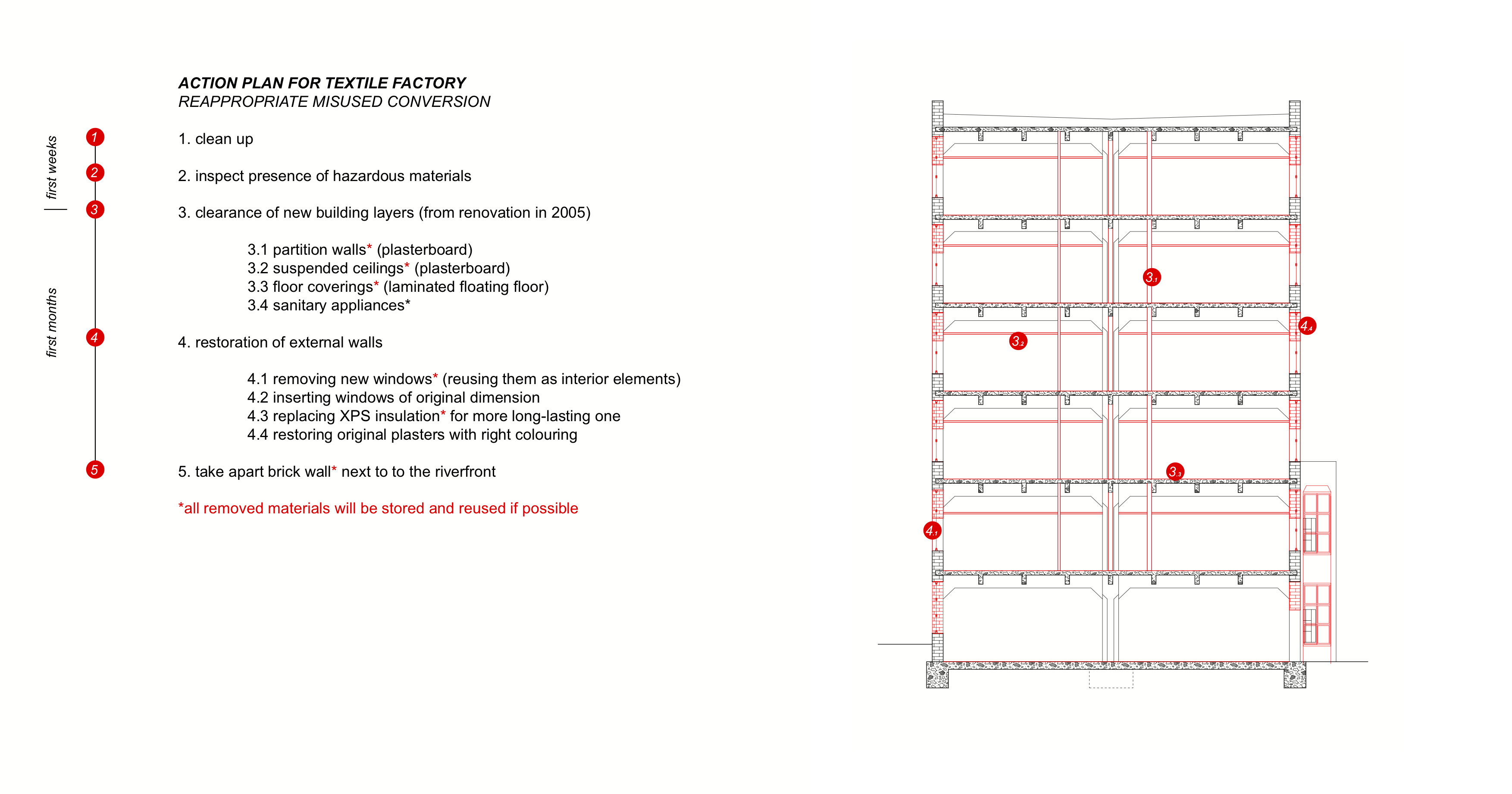





________
master thesis at TU Delft, 2019
led by Daniel Rosbottom, Mark Pimlott, Mauro Parravicini, Leeke Reinders a Tom Weaver
︎ PROKOP MATĚJ 2025 ︎
